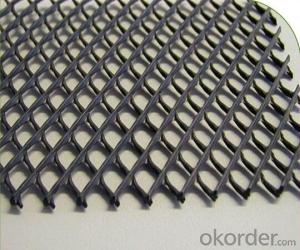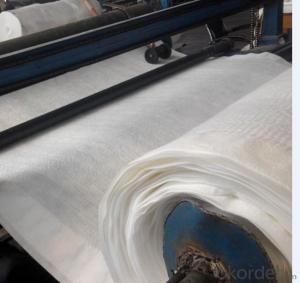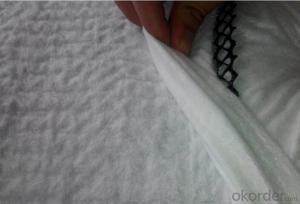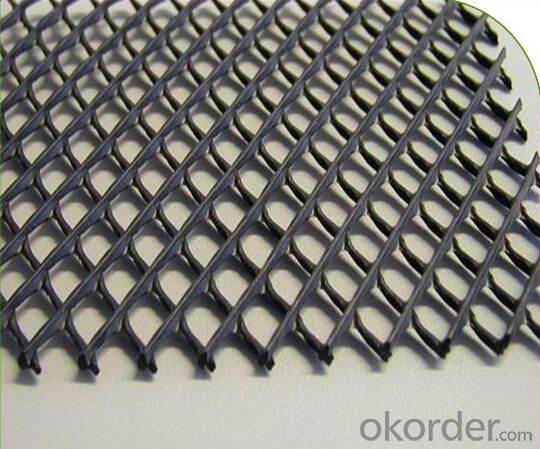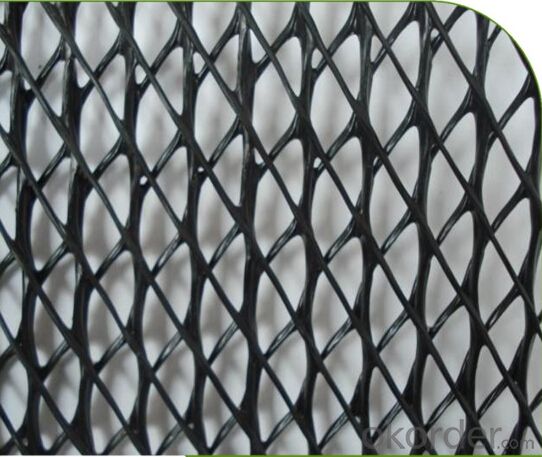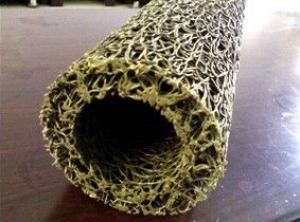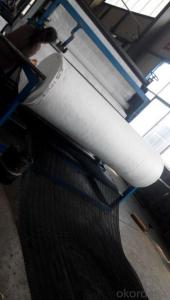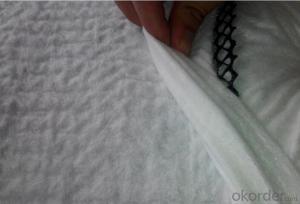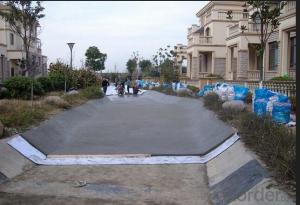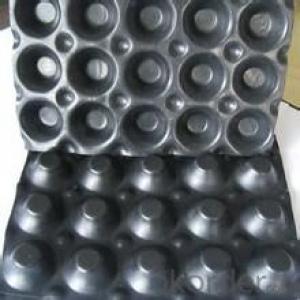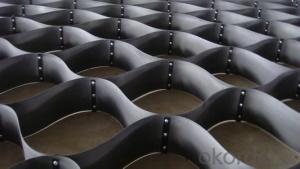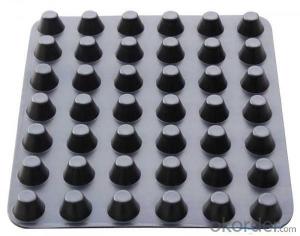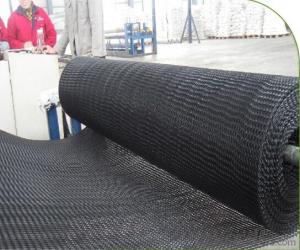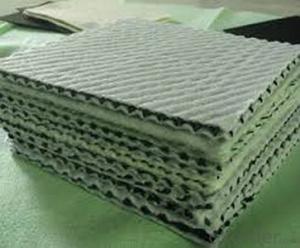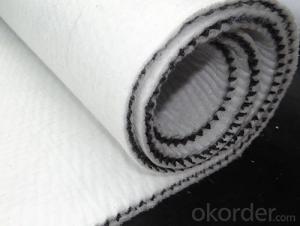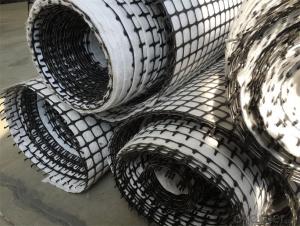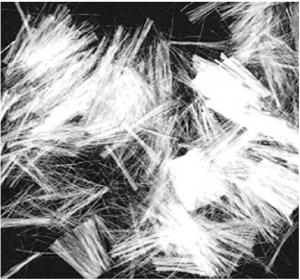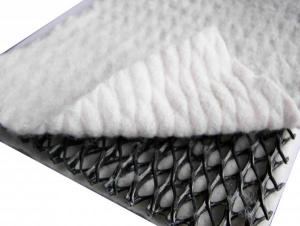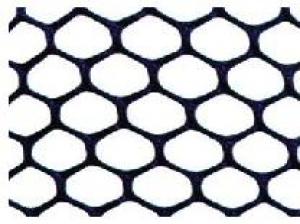HDPE Trainage Geonet /Geocomposites/Tri-dimension Drainage Composites
- Loading Port:
- Qingdao
- Payment Terms:
- TT or LC
- Min Order Qty:
- 2000 m²
- Supply Capability:
- 200000 m²/month
OKorder Service Pledge
OKorder Financial Service
You Might Also Like
Description:
Tri-dimension composite genet for drainage is a new type of geosynthetics.
Its made of atri-dimension geonet coated with geotextile on both sides. Network core consists of a tri-dimension
thick vertical rib, and a rip on top and bottom .
It can drain underground water quickly, also there is a protection system,which can block the capillary water under high load. At the same time, it can also reinforce and isolate of foundation.
Specifications:
core thickness: 5 mm - 8 mm
unit weight: 750g/m2-1500g/m2
width: 2 - 4m,
composite geotextile: short fiber needle punched geotextile,filament spunbonded needle punched geotextile,the length at request .
Typical Application:
Landfill drainage; roadbed and road drainagel; railway drainage, tunnel drainage, undergroud structure drainage, the retaining back wall drainage, gardens and sports grouds drainage
Features:
Excellent drainage function, can bear long time hige press load
High tensile and shear strength
Reduce the rate geotextile embedding into the core of geonet, can protect long time stable water conductivity
Tri-dimension composite geonet for drainage can bear more than kpa compression load
Its anti-compression capacity is much larger than common geonet for drainage.
Specifications:
Drainage netwrok core | units | Specification | |||
Unit weight | g/m2 | 750 | 1000 | 1300 | 1600 |
Thickness OV=20kpa | mm | 5.0 | 6.0 | 7.0 | 7.6 |
Hydraulic conductivity | m/s | K x 10 -4 | K x 10 -4 | K x 10 -3 | K x 10 -3 |
Elongation | % | <50< span=""> | <50< span=""> | <50< span=""> | <50< span=""> |
Tensile strength ( core network) | KN/m | 8 | 10 | 12 | 14 |
Geotextile | g/m2 | 200-200 | 200-200 | 200-200 | 200-200 |
Properties:
Tri-dimension composite geonet for drainage is made of a unique tri-dimension geonet coated with geotextile
on both sides.
It has the property of geotextile(filtration) and geonet (drainage and protection) and provide a function system of“filtration-drainage-protection”.
The tri-dimension structure can bear higher load in construction and remain certain thickness,strength and
excellent in water conductivity.
FAQ
1. Which payment do you accept?
For you convinience,our payment can be L/C,TT
2. Is free sample available?
We can supply free samples if you need.
3. How about your quality?
We have strict quality control system, we make testing on incoming raw material and finished products. Your third party testing is also welcomed. With high quality, our products are used on government projects at home and abroad. Our product quality is accepted by clients from all over the world
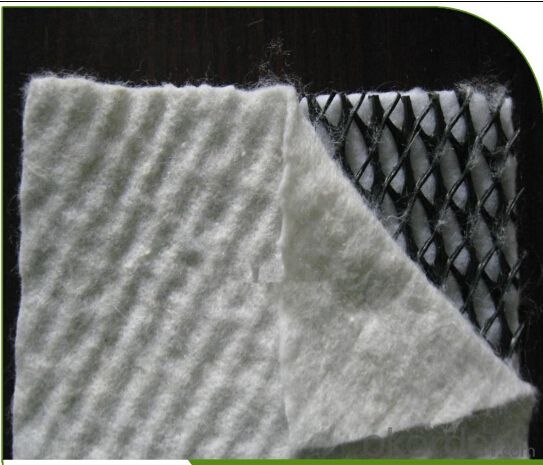
- Q: Civil Engineering Materials Laboratory electricity about how much watts
- Are generally three-phase current, test equipment are needed this.
- Q: How can geocells be used in load support applications?
- Geocells can be used in load support applications by providing a stable and reinforced foundation for various structures. They help distribute the load and prevent soil erosion, allowing for the efficient support of heavy loads such as roads, highways, railways, and even parking lots. The interconnected cells of geocells confine and stabilize the fill material, creating a strong and durable base that can withstand the weight and stress from the loads above.
- Q: What are the different surface textures available for earthwork products?
- There are various surface textures available for earthwork products, including smooth, rough, textured, and patterned finishes. These textures can be achieved through different techniques such as brushing, sandblasting, or imprinting during the manufacturing process. These options allow for customization and provide a range of aesthetic and functional choices for earthwork projects.
- Q: What are the specific applications of geocomposites in earthwork projects?
- Geocomposites have various specific applications in earthwork projects, such as erosion control, soil stabilization, drainage systems, and reinforcement of weak soil areas.
- Q: How do geotextile tubes help in marine construction?
- Geotextile tubes are used in marine construction to provide effective erosion control and shoreline protection. These tubes are filled with sand or slurry and then placed in strategic locations to create barriers that prevent erosion and maintain stability. The geotextile fabric of the tubes allows water to pass through while retaining the fill material, ensuring that the construction remains intact even in high-energy marine environments. Additionally, these tubes can be easily installed, removed, and reused, making them a cost-effective and sustainable solution for marine construction projects.
- Q: What are the benefits of using geotextile tubes for sediment control?
- Geotextile tubes offer several benefits for sediment control. Firstly, they provide an effective and efficient solution for sediment containment and dewatering. They can be easily installed and quickly filled with sediment, reducing the time and effort required for traditional sediment control methods. Additionally, geotextile tubes have a high dewatering capacity, allowing for the separation of water from the sediment, resulting in reduced disposal costs and improved water quality. Furthermore, these tubes are durable and resistant to UV degradation and chemical exposure, ensuring long-term performance and reliability. Overall, the use of geotextile tubes for sediment control offers cost savings, environmental protection, and simplified implementation.
- Q: Are earthwork products durable?
- Yes, earthwork products are generally durable due to their robust construction and use of high-quality materials. They are designed to withstand various weather conditions, heavy loads, and frequent use, ensuring long-lasting performance and reliability. Additionally, proper maintenance and regular inspections can further extend their durability and lifespan.
- Q: Civil engineering commonly used materials which four kinds
- The first floor to answer the right, reinforced concrete gravel sand
- Q: How are geosynthetic materials used in mining and oilfield applications?
- Geosynthetic materials are extensively used in mining and oilfield applications for various purposes. In mining, these materials are commonly employed for lining tailings storage facilities, heap leach pads, and ponds to prevent seepage and contamination of soil and water sources. They also serve as a barrier to control the movement of fluids and gases in underground mining operations. Additionally, geosynthetics are used in reinforcing mine access roads and stabilizing slopes to enhance safety and reduce erosion. In oilfield applications, these materials are utilized in constructing containment systems for oil and gas storage tanks, as well as lining ponds and impoundments to prevent leakage and protect the environment. They also play a crucial role in reinforcing drilling pads and stabilizing the ground during drilling operations. Overall, geosynthetics contribute significantly to improving the efficiency, sustainability, and environmental performance of mining and oilfield activities.
- Q: How do earthwork products help in soil stabilization?
- Earthwork products such as geotextiles, geogrids, and geomembranes play a crucial role in soil stabilization. These products are designed to improve the strength and stability of the soil, preventing erosion, and promoting long-term sustainability. Geotextiles, for instance, act as a barrier against soil movement by separating different soil layers, enhancing their load-bearing capacity, and reducing the potential for settlement. Geogrids, on the other hand, provide reinforcement to retain soil and distribute loads, making them ideal for applications like retaining walls and embankments. Similarly, geomembranes act as a waterproof barrier, preventing water infiltration and maintaining the stability of the soil. Overall, earthwork products contribute significantly to soil stabilization by enhancing its engineering properties and ensuring its resilience against natural forces.
Send your message to us
HDPE Trainage Geonet /Geocomposites/Tri-dimension Drainage Composites
- Loading Port:
- Qingdao
- Payment Terms:
- TT or LC
- Min Order Qty:
- 2000 m²
- Supply Capability:
- 200000 m²/month
OKorder Service Pledge
OKorder Financial Service
Similar products
Hot products
Hot Searches
Related keywords
